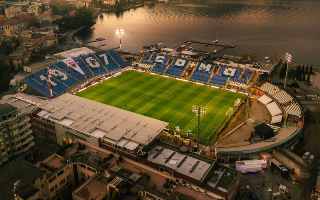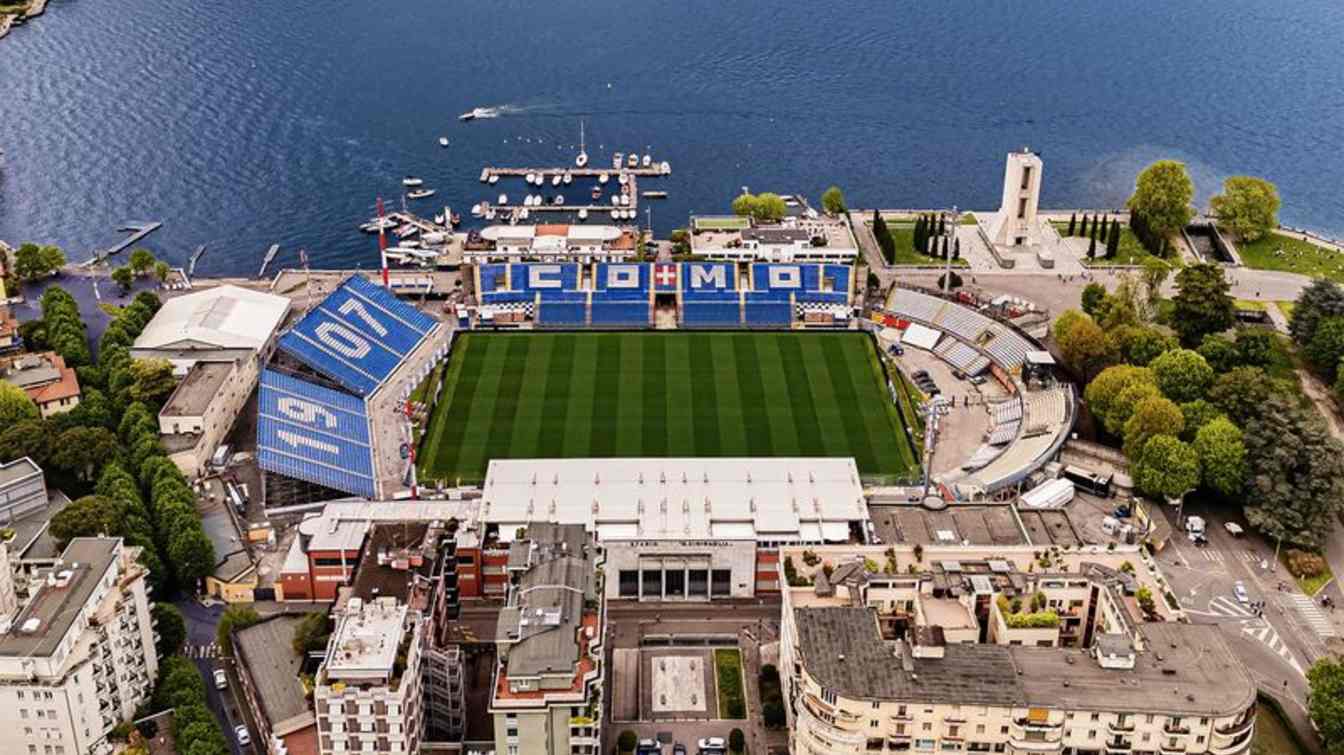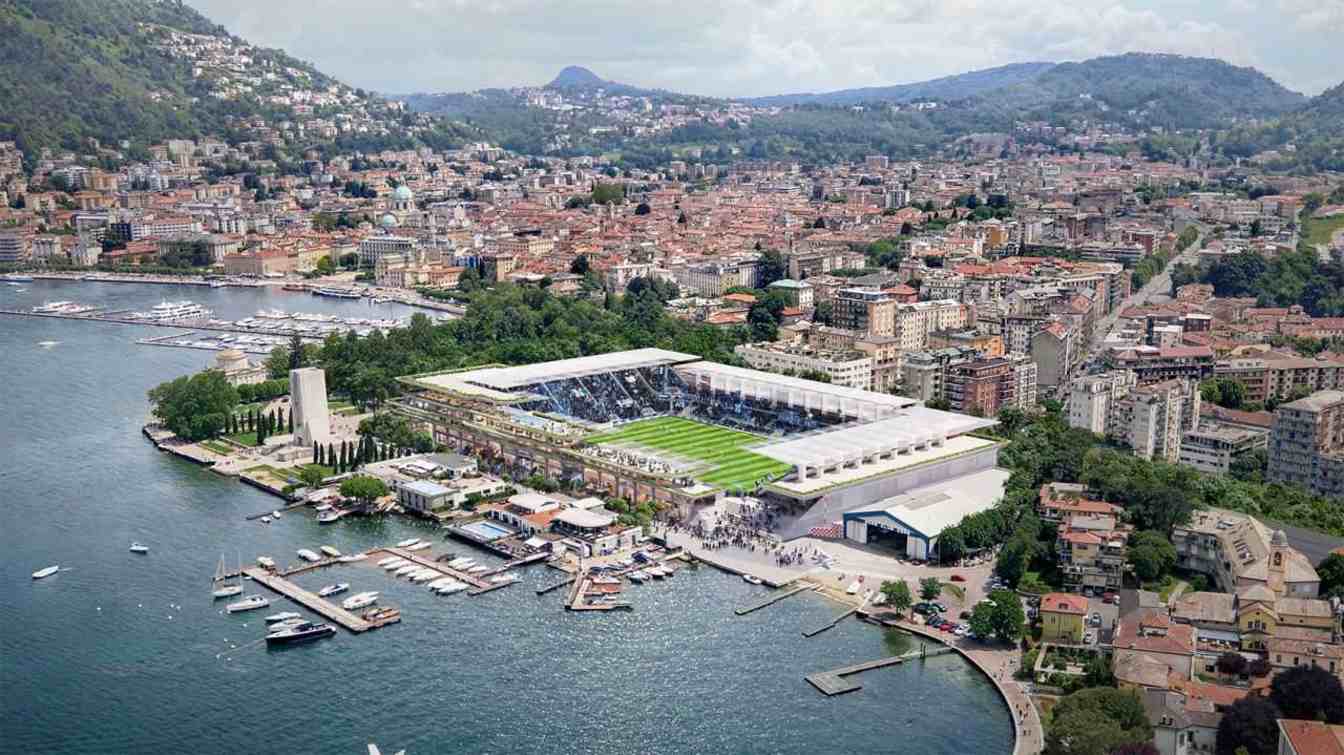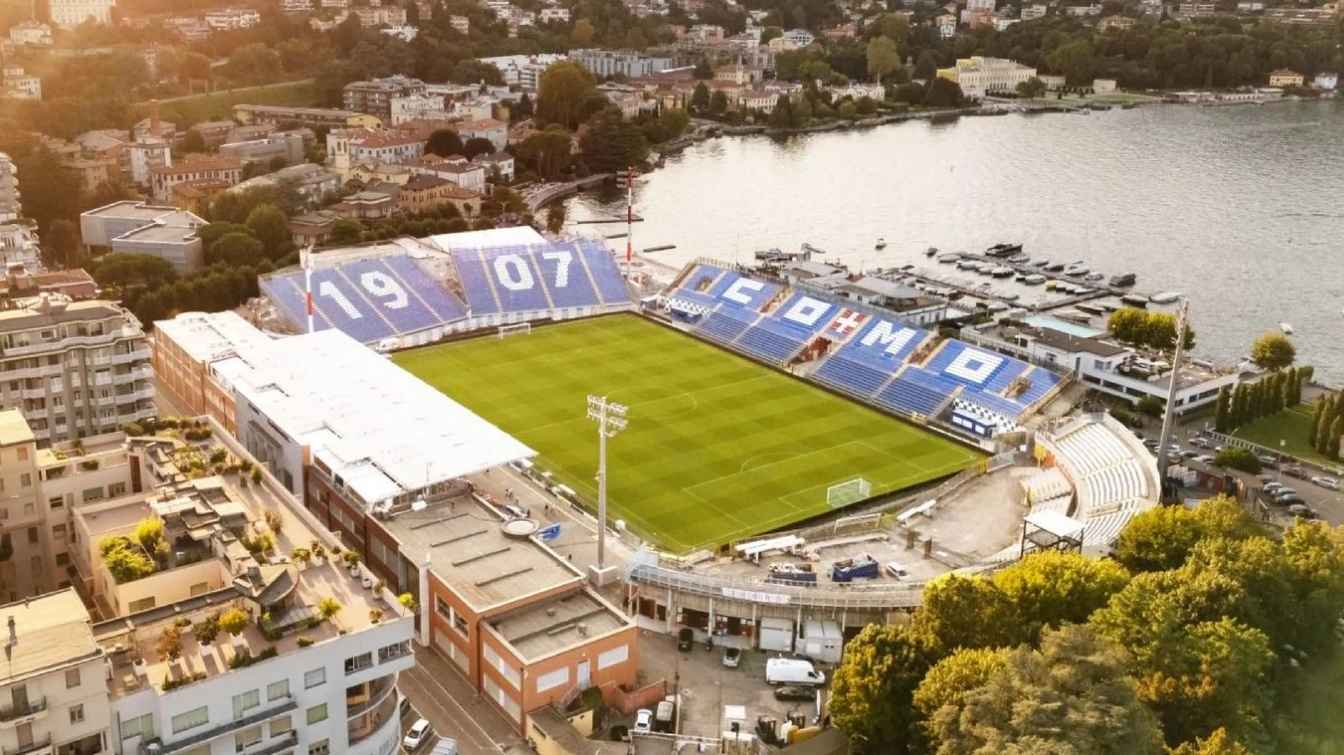Italy: Obstacles to a new stadium for Como
source: StadiumDB.com; author: Paulina Skóra
 A heated debate is ongoing in Como about the renovation of the Sinigaglia stadium. Over 5,000 people have signed a petition supporting the modernization project, including 4,315 online. Fans are in favor, but a residents' committee and a group of architects oppose the plans, fearing invasive urban changes.
A heated debate is ongoing in Como about the renovation of the Sinigaglia stadium. Over 5,000 people have signed a petition supporting the modernization project, including 4,315 online. Fans are in favor, but a residents' committee and a group of architects oppose the plans, fearing invasive urban changes.
Advertisement
Cultural heritage office issues opinion
Key decisions are expected in the coming weeks during meetings at Palazzo Cernezzi. On May 27, a Services Conference was held regarding the new Sinigaglia stadium, which highlighted two main issues: the financial plan and the stadium's dimensions. The Ministry of Culture (through the Superintendence for Archaeology and Fine Arts) released an opinion on the documentation submitted by the Como municipality and the company Como 1907 srl, including a technical and economic feasibility study for the stadium’s reconstruction.
After reviewing the documents, the Superintendence stated that relocating the stadium is not required and a significant rebuild on the current site is possible. They recommended maintaining architectural consistency and respecting the landscape context, including views of the lake, the war memorial, Brunate, and Spina Verde park. New structures must be symmetrical, smaller in scale, and their maximum height must not exceed 16 meters — a reduction from the previously planned 22 meters.
Regarding individual stands, the east stand must preserve the existing tree layout and be set back at least 15 meters from the sidewalk. The north and south stands should have a uniform roofline with a maximum height of 16 meters, without terraces, and along Viale Puecher, a tree-lined avenue should be created. The parking project near Via Bellinzona was criticized due to its proximity to Villa Olmo park and the often congested location, so a detailed study of the greenery there and replenishment with new plantings will be necessary.
 © Como 1907
© Como 1907
Sinigaglia is not the mayor’s personal trophy
Fratelli d’Italia, represented by provincial chairman Stefano Molinari and city coordinator Alessandro Nardone, responded to the Superintendence’s remarks on the stadium revitalization plan. They said the opinion was predictable and confirmed that such a complex, strategic, and important city project requires more than slogans or simplifications — it needs a clear vision and a coherent institutional system. The party representatives stressed that the new Sinigaglia stadium should not be a trophy for the mayor or any political party but a project that can genuinely change Como’s face and unite, not divide, its residents.
MolinarI and Nardone noted they repeatedly warned the mayor to abandon propaganda tones and act on firmer grounds, while also showing understanding for the club's needs. They emphasized that Sinigaglia should remain a football temple, and commercial functions must comply with the Superintendence’s guidelines. The project could be expanded to develop other retail or service spaces in strategic city areas needing revitalization.
At the same time, the Svolta Civica party, led by Vittorio Nessi, criticized Mayor Rapinese, accusing him of endangering Calcio Como’s proposal for the stadium. According to Nessi, instead of supporting the club with a transparent and balanced approach, the mayor backed a project rejected on architectural and financial grounds for propaganda purposes. For weeks, experts, officials, residents, and organizations pointed out problems and doubts, officially confirmed during the Services Conference. Had the mayor considered these opinions, a serious crisis could have been avoided. Meanwhile, since the press conference presenting the project, Rapinese has been driving Calcio Como toward a collision, according to Nessi.
 © Populous
© Populous
What do regional residents think about modernization?
In mid-May, a public summary of the first survey on the new Sinigaglia stadium was held, organized by Fratelli d’Italia. The whole process was based on a design thinking approach — stadium in the district, district in the city, city in the region — supported by AI tools analyzing data and open responses.
The survey profile shows 53% of respondents are aged 46 to 65, 20% aged 30-45, 15% over 65, and 12% under 30. Fifty-four percent live in Como, 17% in neighboring municipalities, and the remaining 29% in other provincial towns, showing that Sinigaglia is seen as a strategic infrastructure not just for Como but the entire region. Regarding ties to Como 1907, 51% identified as fans, 33% as sympathizers, and only 6% have no connection to the team. The stadium is thus more than a sports venue — it symbolizes the city’s identity and community. On additional functions, 75% support including retail and services like shops, hotels, or restaurants, provided the project fits the urban context and doesn’t harm neighborhood life. Fifteen percent oppose this, and 10% have no opinion.
 © Como 1907
© Como 1907
Residents' biggest concerns are about transport and sustainable development: 40% point to traffic and parking problems, 33% to environmental impact, and 18% to people flow management on non-match days. Only 9% see no particular difficulties. Mobility remains a key challenge for the project’s success. Regarding the stadium’s future, 33% see it as a tourism boost, 30% as a chance for job creation and local economic growth, 18% want family and community spaces, and 12% propose cultural events. Only 7% imagine the stadium purely as a place for football. Residents expect a lively, integrated, multifunctional venue.
As for social participation and transparency, 66% are willing to engage in public consultations, 22% want to follow the project without active involvement, and 88% demand constant updates — showing strong community desire for active participation in this major transformation.
Open responses analysis highlighted five main priorities: urban-architectural integration with respect for the landscape and historical heritage; sustainable mobility and smart parking, including public transport and bike paths; environmental care with photovoltaic panels, green roofs, water management, and eco-friendly materials; multifunctionality including spaces for culture, events, families, and associations; and affordable and social accessibility to keep the stadium open to all.
Advertisement

 StadiumDB
StadiumDB